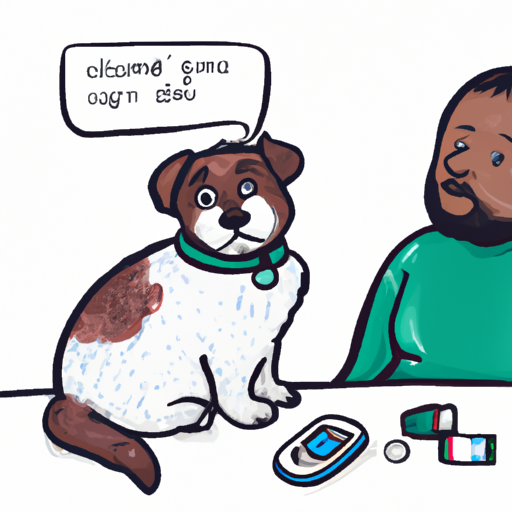Introduction
You might be startled to hear that your beloved furry friend could potentially be diagnosed with diabetes. Just like humans, dogs too can suffer from this disease. As a caregiver, it’s important to be aware of this possibility and know what signs to look out for, how to manage it, and how to prevent it. In this article, we will delve into the topic of diabetes in dogs in detail.
What is Diabetes in Dogs?
Diabetes is a disease that affects the body’s ability to produce or respond to insulin, a hormone that allows the body to turn glucose from the food your dog eats into energy. When a dog has diabetes, its body can’t properly convert food into energy. As a result, its body will start to consume fat and muscle tissue for energy, causing a range of health issues.
Types of Diabetes in Dogs
There are two types of diabetes that can occur in dogs:
- Diabetes Mellitus (Type I): This is the more common type. Dogs with this type of diabetes require insulin injections because their body doesn’t produce any insulin.
- Diabetes Insipidus (Type II): This is a rare type. Dogs with this type can’t properly conserve water due to a lack of antidiuretic hormone.
Symptoms of Diabetes in Dogs
As a caregiver, you need to be aware of the following symptoms that might indicate your dog has diabetes:
- Excessive thirst and urination
- Increased appetite
- Weight loss despite eating more
- Cloudy eyes
- Chronic skin infections
Risk Factors
There are several factors that increase your dog’s risk of developing diabetes. These include:
- Obesity
- Age (older dogs are more at risk)
- Gender (female dogs are more at risk)
- Breed (certain breeds like Beagles, Dachshunds, and German Shepherds have higher risk)
| Risk Factors | Explanation |
|---|---|
| Obesity | Excess fat interferes with insulin’s ability to function |
| Age | Older dogs have a higher risk |
| Gender | Females are twice as likely to have diabetes |
| Breed | Some breeds are more predisposed |
Managing Diabetes in Dogs
Managing diabetes in dogs requires a dedicated and consistent approach. Here are some key steps:
- Regular insulin injections
- Controlled diet
- Regular exercise
- Regular vet check-ups
Preventing Diabetes in Dogs
As a caregiver, there are steps you can take to help prevent your dog from developing diabetes:
- Make sure your dog gets regular exercise
- Keep your dog at a healthy weight
- Feed your dog a balanced diet
- Regular vet check-ups
Frequently Asked Questions
Q: Can my dog live a normal life with diabetes?
Yes, a dog with diabetes can live a normal life with proper management and care.
Q: How often should a diabetic dog eat?
Diabetic dogs should eat multiple small meals a day to keep blood sugar levels consistent.
Q: Do I have to give my dog insulin injections?
Yes, if your dog has Type I diabetes, it will require regular insulin injections.
Q: Can diabetes in dogs be cured?
There’s no cure for diabetes in dogs, but it can be managed effectively with the right approach.
Q: How is diabetes diagnosed in dogs?
Diabetes is diagnosed through a series of tests that include blood tests and urinalysis.
In conclusion, while diabetes can be a serious condition, with the right knowledge and care, you can help your dog live a healthy and fulfilling life. Always stay vigilant for symptoms, and don’t hesitate to consult with your vet if you have any concerns.



